IEEE ICC 2015 Keynote Speakers
Time: Tuesday morning, 9th June 2015
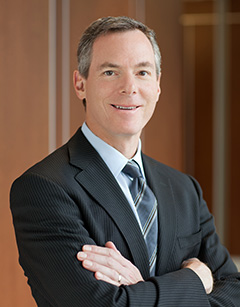 DR. PAUL E. JACOBS
DR. PAUL E. JACOBS
Executive Chairman
Qualcomm Incorporated
Title: Mobile-Powered Future
Abstract: With sales expected to reach over 8 billion units over the next five years, smartphones are not only ubiquitous, they are a major source of technology innovation worldwide. The scale and pace of this innovation is impacting many other industries – including consumer electronics, automotive, health care, robotics, and smart cities – as companies look for ways to leverage the mobile ecosystem and its technology to create intelligently connected products and services.
During his presentation, Qualcomm Executive Chairman Dr. Paul Jacobs will share his unique perspectives on what the future holds for mobile devices, networks and services, and how they will transform experiences and entire industries.
Biography: Dr. Paul E. Jacobs is executive chairman of Qualcomm Incorporated, where he is responsible for helping guide the development of new technologies and Qualcomm’s long-term opportunities.
A leader in the field of mobile communications for more than 25 years and a key architect of Qualcomm’s strategic vision, Dr. Jacobs spearheaded Qualcomm’s efforts to develop and commercialize mobile technology breakthroughs that have significantly contributed to the growth of both the Company and the industry. Important developments which began under Dr. Jacobs include: the first smartphone based on Palm OS®; inclusion of GPS capabilities in mobile phones; and the BREW® application download system.
As an innovative leader of a broad range of technical teams within Qualcomm, Dr. Jacobs has been granted more than 50 patents for his inventions in the areas of wireless technology and devices. Dr. Jacobs is chairman of the U.S.-Korea Business Council and of the Advisory Board of the University of California, Berkeley, College of Engineering; vice chairman and co-owner of the NBA Sacramento Kings; Global eHealth Foundation Ambassador; a member of the International Business Council of the World Economic Forum; a member of the US-India CEO Forum; and serves on the Board of Directors for FIRST®.
Dr. Jacobs received his bachelor's, master's and doctorate degrees in electrical engineering from the University of California, Berkeley.
Time: Tuesday morning, 9th June 2015
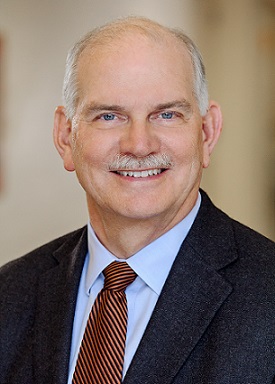 Professor H. Vincent Poor
Professor H. Vincent Poor
Princeton University, USA
Title: Smart Grid: The Role of the Information Sciences (Click on the title for Slides)
Abstract: Smart energy networks are key elements of smart cities. A notable aspect of smart energy networks is smart grid, which involves the imposition of an advanced cyber layer atop the physical layer of the electricity grid in order to improve the efficiency and lower the cost of power use and distribution, and to allow for the effective integration of renewable energy sources and distributed storage into the grid. This cyber-physical setting motivates the application of many techniques from the information sciences to problems arising in the electricity grid, and considerable research effort has been devoted to such application in recent years. This talk will illustrate this role through examples arising in demand-side management, sensing & metering, communications, and related problems.
Biography: H. Vincent Poor is the Michael Henry Strater University Professor at Princeton University, where is also Dean of the School of Engineering and Applied Science. He has held visiting appointments at a number of other universities, including most recently at Stanford and Imperial College. His research interests are in wireless networks, smart grid and related areas. Dr. Poor is a Member of the U. S. National Academy of Engineering and the U. S. National Academy of Sciences, and is a Foreign Member of the Royal Society. An IEEE Fellow, he is also a Corresponding Fellow of the Royal Society of Edinburgh, and an International Fellow of the Royal Academy of Engineering of the U.K. A recipient of ComSoc’s Marconi and Armstrong Awards in 2007 and 2009, respectively, recent recognition of his work includes the 2014 URSI Booker Gold Medal, and honorary doctorates from several universities in Asia and Europe.
Time: Wednesday morning, 10th June 2015
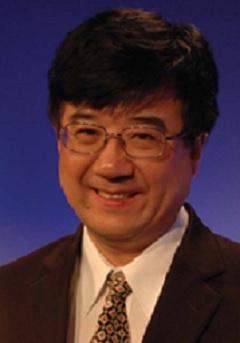 Dr Wen Tong
Dr Wen Tong
CTO
Huawei Wireless
Title: 5G to Embrace the Vertical Industries
Abstract: The emerging 5G wireless will have a huge impact on the transformation of vertical industries. These represent a significant challenge to the 5G wireless technology, especially, the high reliability for the mission critical vertical industries, the ultra-low latency for the machine control such as autonomous driving car industries and massive links for the sensing data from everything. A set of new 5G radio access capabilities have to be created to meet diverse requirements from different applications, on the other hand, the radio access network and core network architecture will evolve to adapt to different requirement, in this case, the network virtualization and slicing is the critical foundation to enable a single and unified virtualizes network architecture.
Biography: Dr. Wen Tong is the Huawei Fellow, Head of Huawei Wireless Research, CTO, Huawei Wireless. Prior to joining Huawei in March 2009, Dr. Tong was the Nortel Fellow and global Head of the Network Technology Labs at Nortel. He has pioneered fundamental technologies in wireless with 350 granted US patents. Since 2010, Dr. Tong has been the Vice President of Huawei Wireless Research. He is leading Huawei’s 5G wireless research and development. In 2014, He was elected as IEEE Fellow. In 2014, he was the recipient of IEEE ComSoc’s Industry Innovation Award for “the leadership and contributions in development of 3G and 4G wireless systems”. Dr. Tong serves as Board of Director of WiFi Alliance and Board of Director of Green Touch Consortium.
Time: Wednesday morning, 10th June 2015
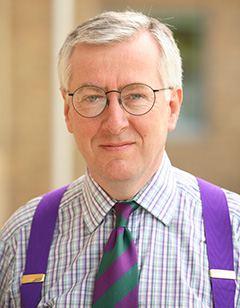 Professor Alwyn Seeds
Professor Alwyn Seeds
University College London, UK
Title: Wireless over Fibre Systems: from MHz to THz
Abstract: Wireless over fibre (WoF) systems have found an increasing role in coverage solutions for large buildings, driven by the increased data rates in mobile systems. Optical fibre transmission has enabled greatly increased transmission rates for fixed devices, with 10Gb/s common in local area networks. End users find wireless access highly convenient, however limited spectrum availability at microwave frequencies results in per-user transmission rates which are limited to much lower values. Extending the high data-rate capacity of optical fibre transmission to wireless devices requires greatly increased carrier frequencies. This keynote will present the technologies for WoF systems and discuss how photonic techniques can enable ultra-high capacity wireless data transmission using signals at millimetre-wave and TeraHertz (THz) frequencies.
Biography: Professor Alwyn Seeds is currently Head of the Department of Electronic and Electrical Engineering at University College London. He has published over 300 papers on microwave and opto-electronic devices and their systems applications. Professor Seeds is a Fellow of the Royal Academy of Engineering (UK) and an IEEE Fellow. He has been a Member of the Board of Governors and Vice-President for Technical Affairs of the IEEE Photonics Society. He has served on the programme committees for many international conferences. He is a co-founder of Zinwave, a manufacturer of wireless over fibre systems. He was awarded the Gabor Medal and Prize of the Institute of Physics in 2012.
Time: Thursday morning, 11th June 2015
 Professor Xiaohu You
Professor Xiaohu You
Southeast University, China
Title: 5G Mobile Communications in China (Click on the title for Slides)
Abstract: In the past decade, mobile communications industry in China has developed very rapidly. China has the largest number of mobile subscribers (over one billion) in the world. The investment by Chinese government in the R&D for 5G mobile communication technologies has been increased significantly in recent years. This keynote will introduce the national strategy in 5G mobile communications in China and present its latest R&D work, especially key enabling techniques for 5G radio transmission and networking. An open architecture testbed based on the massive cooperative cloud radio will be briefly presented.
Biography: Professor Xiaohu You is currently the Director of National Mobile Communications Research Laboratory at Southeast University and a Cheung Kong Specially-appointed Professor. He has published extensively in international journals and conferences in the areas of signal processing and wireless communications. Since 1999, he has been the Principal Expert of the 3G, 4G and 5G mobile communications projects of China National “863” High-Tech Program. He was the recipient of China National First-class Technical Invention Award in 2011 and was the General Chair of IEEE WCNC2013. He is the Chairman of IEEE Nanjing Section. Professor You was selected as IEEE Fellow in 2011 for his contributions to development of mobile communications in China. He is awarded Distinguished Visiting Fellowship of Royal Academy of Engineering.
Time: Thursday morning, 11th June 2015
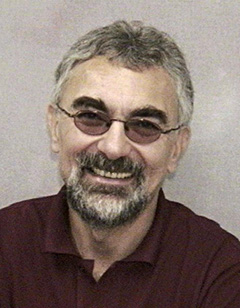 Professor Lajos Hanzo
Professor Lajos Hanzo
University of Southampton, UK
Title: A Stroll with Shannon to Next-Generation Plaza: Large-Scale MIMOs, Single versus Multiple RF Chains and All That... (Click on the title for Slides)
Abstract: Commencing with a brief historical recital of the four wireless generations, the most potent enabling techniques are critically appraised by considering a range of radical techniques of increasing the achievable throughput. We live in an era, when the tele-traffic demand outstrips the available capacity, as tele-presence with its joy and wonder gradually becomes a commercial reality. Specifically, the pros and cons of coherent versus non-coherent large-scale MIMO systems are considered and the benefits as well as disadvantages of their multi-functional antenna array based and spatial modulation aided manifestations are touched upon.
The holistic optimization of large-scale wireless systems potentially imposes an excessive complexity, which may however be mitigated with the aid of bio-inspired or near-optimum quantum-domain search algorithms. Finally, the spectrum crunch may be mitigated by exploiting a radically increased part of the entire electromagnetic spectrum. On a predictive note, we have only seen the tip of the iceberg Dr Shannon...
Biography: Lajos Hanzo (http://www-mobile.ecs.soton.ac.uk) FREng, FIEEE, FIET, Eurasip Fellow, DSc holds the Chair of Telecommunications at Southampton University, UK. He co-authored 20 IEEE Press - John Wiley books and 1434 research contributions at IEEE Xplore, organised and chaired major IEEE conferences and has been awarded a number of distinctions. His research is funded by the European Research Council's Advanced Fellow Grant.
Time: Thursday morning, 11th June 2015
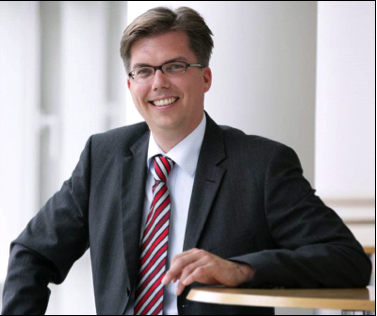 Dr. Jürgen Schindler
Dr. Jürgen Schindler
Head of 5G Business Program
Nokia
Title: 5G, Expanding The Human Possibilities of Technology (Click on the title for Slides)
Abstract: The understanding of 5G use cases and requirements are becoming clearer. 5G technology demonstrations show that many technologies that were more on idea level just a year ago can be built. Nokia as an industry leading company is helping the public 5G research to switch gears- the research will develop 5G building blocks further and organize them to an integrated 5G systems embracing also LTE-Advanced evolution, WiFi and fixed. In this keynote, Nokia 5G Business Program Head Dr. Jürgen Schindler will share his view of top 5 key technology components of 5G and explain Nokia’s holistic systems research, prototyping & development.
Biography: Dr. Jürgen Schindler is responsible for building up the 5G Radio organization in Nokia with the target to provide a complete portfolio of 5G products. Prior to the current position, Jürgen was heading LTE Lead Customer Product Management in Nokia Siemens Networks where he was working with leading customers to define the LTE product strategy. From 2004 to 2007 Jürgen was heading Portfolio Management Radio and was responsible for the Siemens Mobile Network Product Portfolio. From 2001 to 2004, Jürgen was heading Network Engineering department being responsible for planning and optimization of Mobile Networks. Jürgen started his professional career in Siemens in 1997 doing research on 3G. He was then heading the 3GPP Radio Standardization. Jürgen is married, has two children and is living near Munich Germany. His recreational interests include traveling, skiing, golf and international relations.
Time: Tuesday morning, 9th June 2015
 DR. PAUL E. JACOBS
DR. PAUL E. JACOBS Executive Chairman
Qualcomm Incorporated
Title: Mobile-Powered Future
Abstract: With sales expected to reach over 8 billion units over the next five years, smartphones are not only ubiquitous, they are a major source of technology innovation worldwide. The scale and pace of this innovation is impacting many other industries – including consumer electronics, automotive, health care, robotics, and smart cities – as companies look for ways to leverage the mobile ecosystem and its technology to create intelligently connected products and services.
During his presentation, Qualcomm Executive Chairman Dr. Paul Jacobs will share his unique perspectives on what the future holds for mobile devices, networks and services, and how they will transform experiences and entire industries.
Biography: Dr. Paul E. Jacobs is executive chairman of Qualcomm Incorporated, where he is responsible for helping guide the development of new technologies and Qualcomm’s long-term opportunities.
A leader in the field of mobile communications for more than 25 years and a key architect of Qualcomm’s strategic vision, Dr. Jacobs spearheaded Qualcomm’s efforts to develop and commercialize mobile technology breakthroughs that have significantly contributed to the growth of both the Company and the industry. Important developments which began under Dr. Jacobs include: the first smartphone based on Palm OS®; inclusion of GPS capabilities in mobile phones; and the BREW® application download system.
As an innovative leader of a broad range of technical teams within Qualcomm, Dr. Jacobs has been granted more than 50 patents for his inventions in the areas of wireless technology and devices. Dr. Jacobs is chairman of the U.S.-Korea Business Council and of the Advisory Board of the University of California, Berkeley, College of Engineering; vice chairman and co-owner of the NBA Sacramento Kings; Global eHealth Foundation Ambassador; a member of the International Business Council of the World Economic Forum; a member of the US-India CEO Forum; and serves on the Board of Directors for FIRST®.
Dr. Jacobs received his bachelor's, master's and doctorate degrees in electrical engineering from the University of California, Berkeley.
Time: Tuesday morning, 9th June 2015
 Professor H. Vincent Poor
Professor H. Vincent Poor Princeton University, USA
Title: Smart Grid: The Role of the Information Sciences (Click on the title for Slides)
Abstract: Smart energy networks are key elements of smart cities. A notable aspect of smart energy networks is smart grid, which involves the imposition of an advanced cyber layer atop the physical layer of the electricity grid in order to improve the efficiency and lower the cost of power use and distribution, and to allow for the effective integration of renewable energy sources and distributed storage into the grid. This cyber-physical setting motivates the application of many techniques from the information sciences to problems arising in the electricity grid, and considerable research effort has been devoted to such application in recent years. This talk will illustrate this role through examples arising in demand-side management, sensing & metering, communications, and related problems.
Biography: H. Vincent Poor is the Michael Henry Strater University Professor at Princeton University, where is also Dean of the School of Engineering and Applied Science. He has held visiting appointments at a number of other universities, including most recently at Stanford and Imperial College. His research interests are in wireless networks, smart grid and related areas. Dr. Poor is a Member of the U. S. National Academy of Engineering and the U. S. National Academy of Sciences, and is a Foreign Member of the Royal Society. An IEEE Fellow, he is also a Corresponding Fellow of the Royal Society of Edinburgh, and an International Fellow of the Royal Academy of Engineering of the U.K. A recipient of ComSoc’s Marconi and Armstrong Awards in 2007 and 2009, respectively, recent recognition of his work includes the 2014 URSI Booker Gold Medal, and honorary doctorates from several universities in Asia and Europe.
Time: Wednesday morning, 10th June 2015
 Dr Wen Tong
Dr Wen Tong CTO
Huawei Wireless
Title: 5G to Embrace the Vertical Industries
Abstract: The emerging 5G wireless will have a huge impact on the transformation of vertical industries. These represent a significant challenge to the 5G wireless technology, especially, the high reliability for the mission critical vertical industries, the ultra-low latency for the machine control such as autonomous driving car industries and massive links for the sensing data from everything. A set of new 5G radio access capabilities have to be created to meet diverse requirements from different applications, on the other hand, the radio access network and core network architecture will evolve to adapt to different requirement, in this case, the network virtualization and slicing is the critical foundation to enable a single and unified virtualizes network architecture.
Biography: Dr. Wen Tong is the Huawei Fellow, Head of Huawei Wireless Research, CTO, Huawei Wireless. Prior to joining Huawei in March 2009, Dr. Tong was the Nortel Fellow and global Head of the Network Technology Labs at Nortel. He has pioneered fundamental technologies in wireless with 350 granted US patents. Since 2010, Dr. Tong has been the Vice President of Huawei Wireless Research. He is leading Huawei’s 5G wireless research and development. In 2014, He was elected as IEEE Fellow. In 2014, he was the recipient of IEEE ComSoc’s Industry Innovation Award for “the leadership and contributions in development of 3G and 4G wireless systems”. Dr. Tong serves as Board of Director of WiFi Alliance and Board of Director of Green Touch Consortium.
Time: Wednesday morning, 10th June 2015
 Professor Alwyn Seeds
Professor Alwyn SeedsUniversity College London, UK
Title: Wireless over Fibre Systems: from MHz to THz
Abstract: Wireless over fibre (WoF) systems have found an increasing role in coverage solutions for large buildings, driven by the increased data rates in mobile systems. Optical fibre transmission has enabled greatly increased transmission rates for fixed devices, with 10Gb/s common in local area networks. End users find wireless access highly convenient, however limited spectrum availability at microwave frequencies results in per-user transmission rates which are limited to much lower values. Extending the high data-rate capacity of optical fibre transmission to wireless devices requires greatly increased carrier frequencies. This keynote will present the technologies for WoF systems and discuss how photonic techniques can enable ultra-high capacity wireless data transmission using signals at millimetre-wave and TeraHertz (THz) frequencies.
Biography: Professor Alwyn Seeds is currently Head of the Department of Electronic and Electrical Engineering at University College London. He has published over 300 papers on microwave and opto-electronic devices and their systems applications. Professor Seeds is a Fellow of the Royal Academy of Engineering (UK) and an IEEE Fellow. He has been a Member of the Board of Governors and Vice-President for Technical Affairs of the IEEE Photonics Society. He has served on the programme committees for many international conferences. He is a co-founder of Zinwave, a manufacturer of wireless over fibre systems. He was awarded the Gabor Medal and Prize of the Institute of Physics in 2012.
Time: Thursday morning, 11th June 2015
 Professor Xiaohu You
Professor Xiaohu YouSoutheast University, China
Title: 5G Mobile Communications in China (Click on the title for Slides)
Abstract: In the past decade, mobile communications industry in China has developed very rapidly. China has the largest number of mobile subscribers (over one billion) in the world. The investment by Chinese government in the R&D for 5G mobile communication technologies has been increased significantly in recent years. This keynote will introduce the national strategy in 5G mobile communications in China and present its latest R&D work, especially key enabling techniques for 5G radio transmission and networking. An open architecture testbed based on the massive cooperative cloud radio will be briefly presented.
Biography: Professor Xiaohu You is currently the Director of National Mobile Communications Research Laboratory at Southeast University and a Cheung Kong Specially-appointed Professor. He has published extensively in international journals and conferences in the areas of signal processing and wireless communications. Since 1999, he has been the Principal Expert of the 3G, 4G and 5G mobile communications projects of China National “863” High-Tech Program. He was the recipient of China National First-class Technical Invention Award in 2011 and was the General Chair of IEEE WCNC2013. He is the Chairman of IEEE Nanjing Section. Professor You was selected as IEEE Fellow in 2011 for his contributions to development of mobile communications in China. He is awarded Distinguished Visiting Fellowship of Royal Academy of Engineering.
Time: Thursday morning, 11th June 2015
 Professor Lajos Hanzo
Professor Lajos HanzoUniversity of Southampton, UK
Title: A Stroll with Shannon to Next-Generation Plaza: Large-Scale MIMOs, Single versus Multiple RF Chains and All That... (Click on the title for Slides)
Abstract: Commencing with a brief historical recital of the four wireless generations, the most potent enabling techniques are critically appraised by considering a range of radical techniques of increasing the achievable throughput. We live in an era, when the tele-traffic demand outstrips the available capacity, as tele-presence with its joy and wonder gradually becomes a commercial reality. Specifically, the pros and cons of coherent versus non-coherent large-scale MIMO systems are considered and the benefits as well as disadvantages of their multi-functional antenna array based and spatial modulation aided manifestations are touched upon.
The holistic optimization of large-scale wireless systems potentially imposes an excessive complexity, which may however be mitigated with the aid of bio-inspired or near-optimum quantum-domain search algorithms. Finally, the spectrum crunch may be mitigated by exploiting a radically increased part of the entire electromagnetic spectrum. On a predictive note, we have only seen the tip of the iceberg Dr Shannon...
Biography: Lajos Hanzo (http://www-mobile.ecs.soton.ac.uk) FREng, FIEEE, FIET, Eurasip Fellow, DSc holds the Chair of Telecommunications at Southampton University, UK. He co-authored 20 IEEE Press - John Wiley books and 1434 research contributions at IEEE Xplore, organised and chaired major IEEE conferences and has been awarded a number of distinctions. His research is funded by the European Research Council's Advanced Fellow Grant.
Time: Thursday morning, 11th June 2015
 Dr. Jürgen Schindler
Dr. Jürgen SchindlerHead of 5G Business Program
Nokia
Title: 5G, Expanding The Human Possibilities of Technology (Click on the title for Slides)
Abstract: The understanding of 5G use cases and requirements are becoming clearer. 5G technology demonstrations show that many technologies that were more on idea level just a year ago can be built. Nokia as an industry leading company is helping the public 5G research to switch gears- the research will develop 5G building blocks further and organize them to an integrated 5G systems embracing also LTE-Advanced evolution, WiFi and fixed. In this keynote, Nokia 5G Business Program Head Dr. Jürgen Schindler will share his view of top 5 key technology components of 5G and explain Nokia’s holistic systems research, prototyping & development.
Biography: Dr. Jürgen Schindler is responsible for building up the 5G Radio organization in Nokia with the target to provide a complete portfolio of 5G products. Prior to the current position, Jürgen was heading LTE Lead Customer Product Management in Nokia Siemens Networks where he was working with leading customers to define the LTE product strategy. From 2004 to 2007 Jürgen was heading Portfolio Management Radio and was responsible for the Siemens Mobile Network Product Portfolio. From 2001 to 2004, Jürgen was heading Network Engineering department being responsible for planning and optimization of Mobile Networks. Jürgen started his professional career in Siemens in 1997 doing research on 3G. He was then heading the 3GPP Radio Standardization. Jürgen is married, has two children and is living near Munich Germany. His recreational interests include traveling, skiing, golf and international relations.